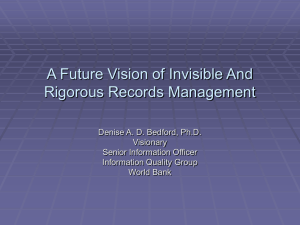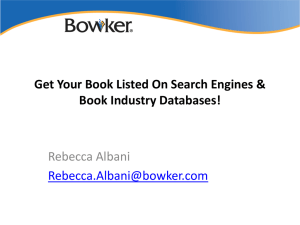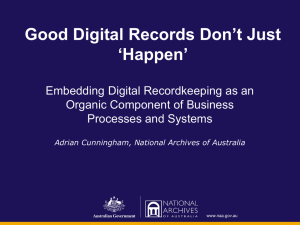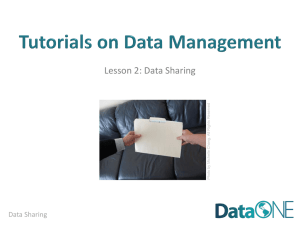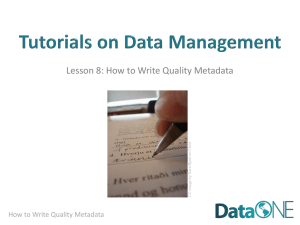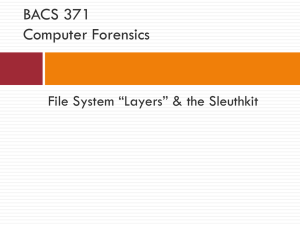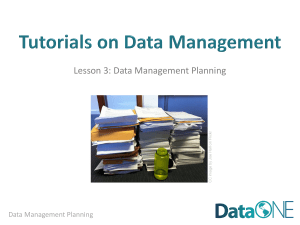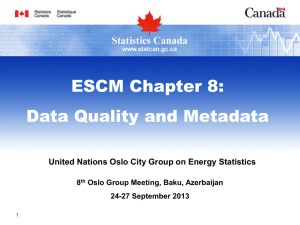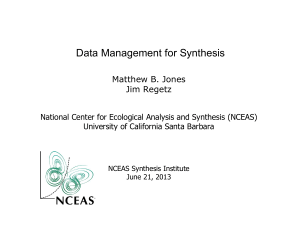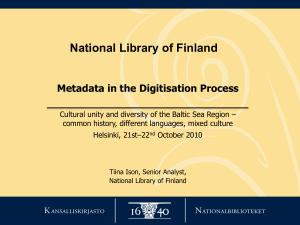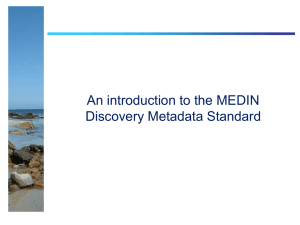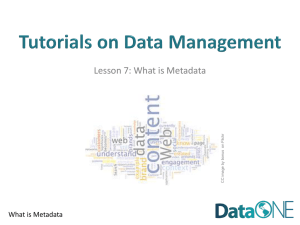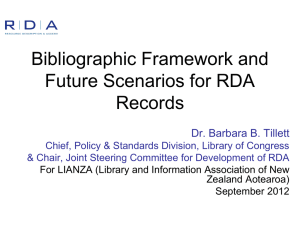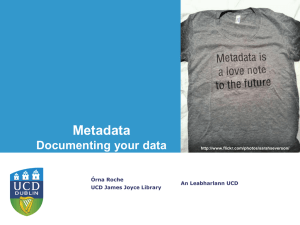Tips for Writing Good Metadata
advertisement
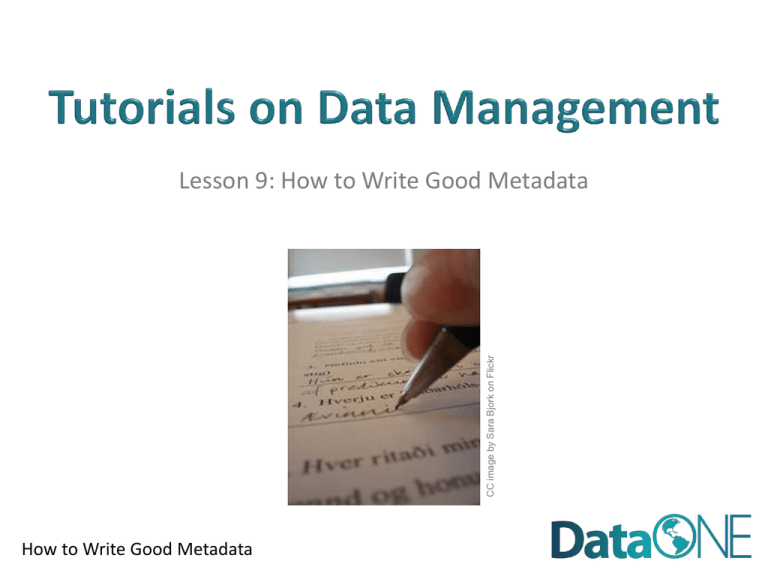
CC image by Sara Bjork on Flickr
Lesson 9: How to Write Good Metadata
How to Write Good Metadata
• Preparation
• Tips for writing good metadata
How to Write Good Metadata
• After completing this lesson, the participant will be able to:
-List steps to prepare to write metadata
CC image by Rennett Stowe on Flickr
-Explain how to write good metadata
How to Write Good Metadata
Plan
Analyze
Collect
Integrate
Assure
Discover
Describe
Preserve
How to Write Good Metadata
•
•
•
•
•
•
Organize your information
Write your metadata
Review for accuracy and completeness
Have someone else read your record
Revise the record, based on comments from your reviewer
Review once more before you publish
How to Write Good Metadata
• Do not use jargon
• Define technical terms and acronyms:
o CA, LA, GPS, GIS : what do these mean?
• Clearly state data limitations
o E.g., data set omissions, completeness of data
o Express considerations for appropriate re-use of the data
• Use “none” or “unknown” meaningfully
o None usually means that you knew about data and nothing existed
(e.g., a “0” cubic feet per second discharge value)
o Unknown means that you don’t know whether that data existed or
not (e.g., a null value)
How to Write Good Metadata
Titles, Titles, Titles…
• Titles are critical in helping readers find your data
o While individuals are searching for the most appropriate data sets,
they are most likely going to use the title as the first criteria to
determine if a dataset meets their needs.
o Treat the title as the opportunity to sell your dataset.
• A complete title includes: What, Where, When, Who, and
Scale
• An informative title includes: topic, timeliness of the data,
specific information about place and geography
How to Write Good Metadata
• A Clear Choice: Which title is better?
• Rivers
OR
• Greater Yellowstone Rivers from 1:126,700 U.S. Forest
Service Visitor Maps (1961-1983)
Greater Yellowstone (where) Rivers (what) from 1:126,700
(scale) U.S. Forest Service (who) Visitor Maps (1961-1983)
(when)
How to Write Good Metadata
• Be specific and quantify when you can! The goal of a
metadata record is to give the user enough information to
know if they can use the data without contacting the
dataset owner.
Vague: We checked our work and it
looks complete.
Specific: We checked our work
using a random sample of 5 monitoring
sites reviewed by 2 different people. We
determined our work to be 95%
complete based on these visual
inspections.
How to Write Good Metadata
Select keywords wisely
Use descriptive and clear writing
Fully qualify geographic locations
Use thesauri for keywords whenever possible
Example: USGS Biocomplexity Thesaurus (over 9,500 terms)
CC image by Marco Arment on Flickr
•
•
•
•
•
How to Write Good Metadata
• Remember: a computer will read your metadata
• Do not use symbols that could be misinterpreted: Examples:
!@#%{}|/\<>~
• Don’t use tabs, indents, or line feeds/carriage returns
• When copying and pasting from other sources, use a text
editor (e.g., Notepad) to eliminate hidden characters
How to Write Good Metadata
• Review your final product:
Does the documentation present all the information needed
to use or reuse the data?
CC image by jugbo on Flickr
• Remember: a well-written title and good keywords are
critical in data discovery
How to Write Good Metadata
We want to hear from you!
CLICK the arrow to take our short survey.
How to Write Good Metadata

